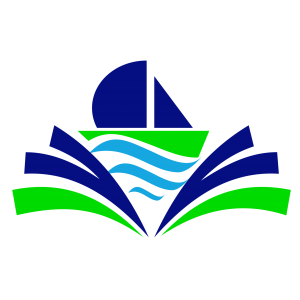Page Contents
COLREGS- International Regulations for Preventing Collisions at Sea Explained For Exams
Rule – 6 Safe speed explanation

Before start reading the below topic make sure that you are familiar with the rules and important terms associated with the rules. if you don’t; go to previous topics – ror-explained.
Firstly let’s go through the rules,
Rule 6 – Safe Speed
Every vessel shall at all times proceed at a safe speed so that she can take proper and effective action to avoid collision and be stopped within a distance appropriate to the prevailing circumstances and conditions.
In determining a safe speed the following factors shall be taken to account:
(a) By all vessels:
- The state of visibility;
- The traffic density including concentrations of fishing vessels or any other vessels;
- The manoeuvrability of the vessel with special reference to stopping distance and turning ability in the prevailing conditions;
- At night the presence of background light such as from shore lights or from backscatter of her own lights;
- The state of wind, sea and current, and the proximity of navigational hazards;
- The draught in relation to the available depth of water.
(b) Additionally, by vessels with operational radar:
- The characteristics, efficiency and limitations of the radar equipment;
- Any constraints imposed by the radar range scale in use;
- The effect on radar detection of the sea state, weather and other sources of interference;
- The possibility that small vessels, ice and other floating objects may not be detected by radar at an adequate range;
- The number, location and movement of vessels detected by radar;
- The more exact assessment of the visibility that may be possible when radar is used to determine the range of vessels or other objects in the vicinity.

Tips: We sorted important topics below, it will help you out in exams. good luck 🤗
Explanation Of Rules
- The Rule is split into two parts – one applies to all vessels, while the
other only applies to those with an “operational radar”. - Too low speed is not safe speed because u cant take proper and effective action and too high speed is also not safe speed; After all, you can’t stop within a distance. That’s why the rule tells only safe speed instead of slow speed or high speed. Although slowing down gives more time to assess any potential risk of collision. So ‘safe speed’ means that the ship sails at a speed at which if any emergency occurs she would come out of the emergency without any problem.
- Even though it’s not a rule, it has been common practice to consult with and get approval from the Master before changing a vessel’s speed. However, this can sometimes cause delays and be seen as a violation of the Rules. Ideally, the Officer of the Watch (OOW) should have complete freedom to decide and adjust the vessel’s speed for safety without any restrictions.
- Explanation of Rule 6a (i) : the state of visibility
- Visibility means the visual range at which objects are visible.
- Good visibility increases the chances of spotting objects at an earlier stage. Consequently, this provides more time to assess the situation, plan accordingly, and take necessary actions to avoid collisions, if required, and ‘in ample time’ (as stated in Rule 8a).
- Explanation of Rule 6a (ii) : the traffic density
- When there is a high traffic density or concentration of fishing vessels, it is important for ships to exercise additional caution. This is due to the increased frequency of encountering other vessels, including those with whom there is a potential risk of collision. Therefore, navigating with extra care is necessary in such situations.
- Explanation of Rule 6a (iii) : Maneuverability of the vessel
- Let’s consider a speed boat and a supertanker as examples. A speedboat has the capability to swiftly turn around and come to a stop within its own length, depending on the conditions. On the other hand, a supertanker requires a much greater distance, often around 3 miles, to slow down and halt. It also has wider turning circles due to its size. As a result, the situation necessitates the need for the supertanker to maintain a slower speed in order to ensure a safe operating parameter.
- The manoeuvring characteristics depend on many factors; the type of vessel and its size, design, loaded or in ballast, momentum, the power and type of the main propulsion systems, propulsion power: displacement ratio, further linked to the type and efficiency of the steering systems.
- Navigators should be fully aware of the manoeuvring characteristics of their vessels.
- Explanation of Rule 6a (iv) : At night presence of background light
- The above refers to the state of visibility, a vessel when she leaves a port is surrounded by a lot of bright shore lights, and her navigation lights may be cluttered up with these lights. A lookout on another vessel would not be able to see the vessel departing the port until she comes to a position where the background is dark.
- The term “backscatter of her own lights” refers to the glare produced by the different lights on a vessel itself. This includes the accommodation lights and, under certain meteorological conditions, even the vessel’s own navigational lights.
- Explanation of Rule 6a (v) : The state of wind, sea and current
- “The state of wind, sea and current” refers to the effects of prevailing weather on the manoeuvring of a vessel.
- The term “proximity of navigational hazards” means any and all factors that can be hazardous to safe navigation: other traffic, shallow waters, shoals, wrecks, land or anything else that can be, or contribute to, hazards of navigation.
- Explanation of Rule 6a (vi) : Draught in relation to the available depth of water
- When the available depth of a vessel (UKC) is less and the vessel is moving at a higher speed, it can lead to the occurrence of the squat effect. This phenomenon increases the risk of vessel grounding.
- To gain a deeper understanding of the squat effect and its relation to shallow water, we recommend reading the following article : What is squat? Explanation of squat effect and shallow water.
- Explanation of Rule 6b (i) : Characteristics , efficiency and limitations of the radar equipment
- Characteristics of radar systems include many differences, especially between the ‘X’ and ‘S’ band radars. we will discuss this topic under X&S Band radars onboard ships in another post.
- Efficiency would be the sensitivity of detecting targets and the range at which they are picked up coupled with the various display and analysing features.
- There are several limitations associated with radar equipment, including:
- Start-up time and operational readiness: Radar systems may require a certain amount of time to power up and become fully operational, which can affect their immediate availability in certain situations.
- Interference and weather effects: Weather conditions and the presence of other radars can cause interference and affect the radar’s performance. This interference may reduce the accuracy or reliability of the radar readings.
- Shadow and blind sectors: Radar systems have limitations in terms of detecting targets in certain areas, such as shadow sectors behind obstacles or blind sectors where the radar’s coverage is limited or blocked.
- Target visibility and discrimination: Smaller targets made of materials with poor radar reflection characteristics, like wood or fiberglass, may not be easily detected or displayed on radar screens, especially at longer ranges. Sea or rain clutter can also obscure or mask these targets.
- False echoes: Radar systems can sometimes generate false echoes, which are radar signals misinterpreted as actual targets. These false echoes can lead to inaccurate readings or misidentification of objects.
- Range and bearing accuracy: The accuracy of range and bearing measurements provided by radar systems can vary, and this variability may impact the precision of target localization and tracking.
- Clutter control: Radar systems employ manual or automatic clutter controls to filter out unwanted signals caused by sea or rain clutter. However, these controls can affect the sensitivity of the radar system and potentially lead to the suppression or misinterpretation of real targets.
- Explanation of Rule 6b (ii) : Any constrains imposed by the radar range scale in use
- Means that the range scale in use has a direct effect on the overall efficiency and effectiveness of the radar systems. So if we have our radar range scale set to 6 miles we are not going to get notified of vessels that are within 12 miles.
- Explanation of Rule 6b (iii) : Radar detection of the sea state, weather and other sources of interference
- It is basically about echoes returned by the sea itself, called sea clutter which can hide the echoes of real targets. Weather conditions also affect radar performance like low heavy rain bearing clouds. Other sources of interference can be many, like other radars in the vicinity or false or multiple echoes etc.
- Explanation of Rule 6b (iv) : The possibility that small vessels, ice and other floating objects may not be detected by radar at an adequate range.
- Explanation of Rule 6b (v) : The number, location and movement of vessels detected by radar
- Monitoring the actions of individual ships and evaluating the level of risk they pose in high traffic areas can be a challenging undertaking. However, utilizing a Radar tracking unit or an Automatic Radar Plotting Aid (ARPA) simplifies this process significantly. It is important to exercise caution and carefully assess the risk factor data provided by the Radar. A comprehensive understanding of the situation is necessary in order to make informed decisions based on the radar’s information.
- Explanation of Rule 6b (vi) : The more exact assessment of the visibility that may be possible when radar is used to determine the range of vessels or other objects in the vicinity.
- When utilizing Radar, it is important to assess the visibility conditions and record the range at which a target is actually detected. Previously, visibility was estimated based on subjective judgment or experience, but with Radar, it provides precise measurements.
That’s all for today, I hope you have gained a clear understanding of the topic. If you have any questions or uncertainties about this topic, please don’t hesitate to leave a comment in the section below.
Thank you, 🤗
By Team Naututor
Disclaimer: The author’s views expressed in this article do not necessarily reflect the views of NauTutor. Data and charts, if used, in the article have been sourced from available information and have not been authenticated by any statutory authority. The author and Naututor do not claim it to be accurate nor accept any responsibility for the same. The views constitute only the opinions and do not constitute any guidelines or recommendations on any course of action to be followed by the reader.
The article or images cannot be reproduced, copied, shared or used in any form without the permission of the author and Naututor.
